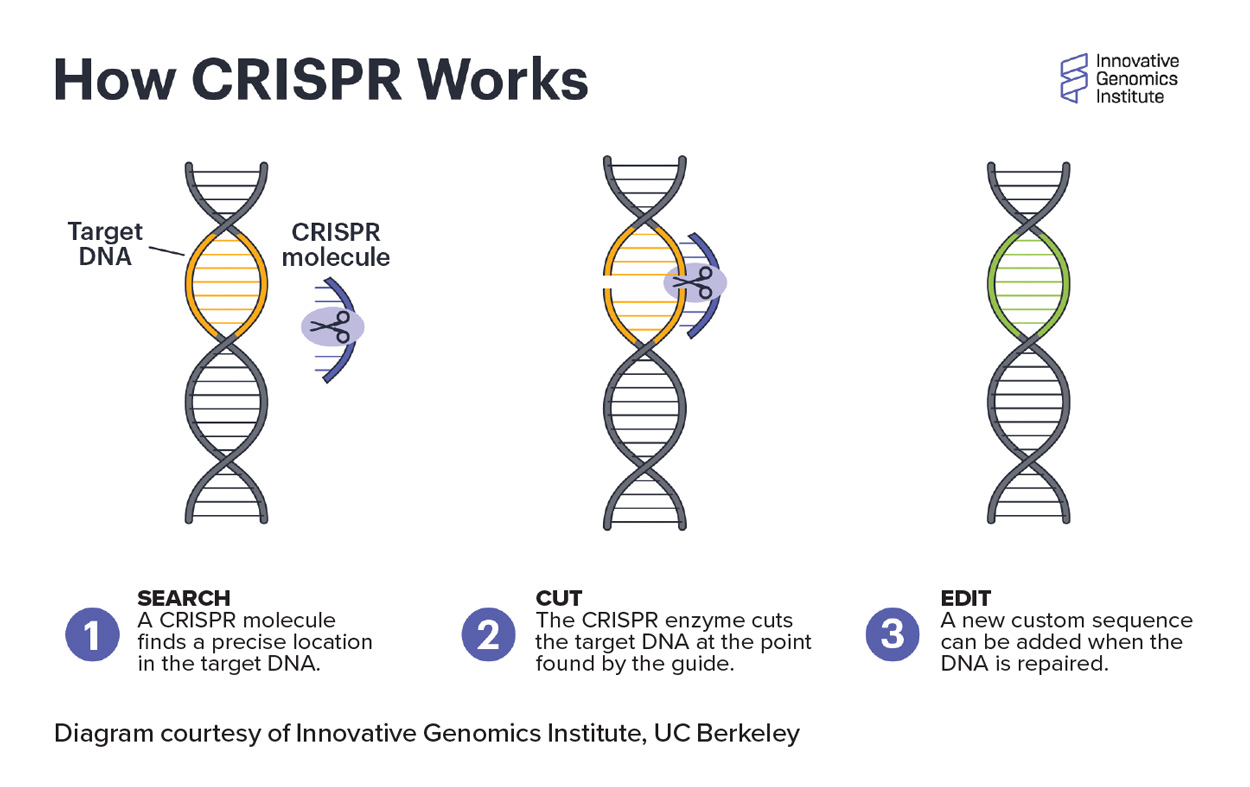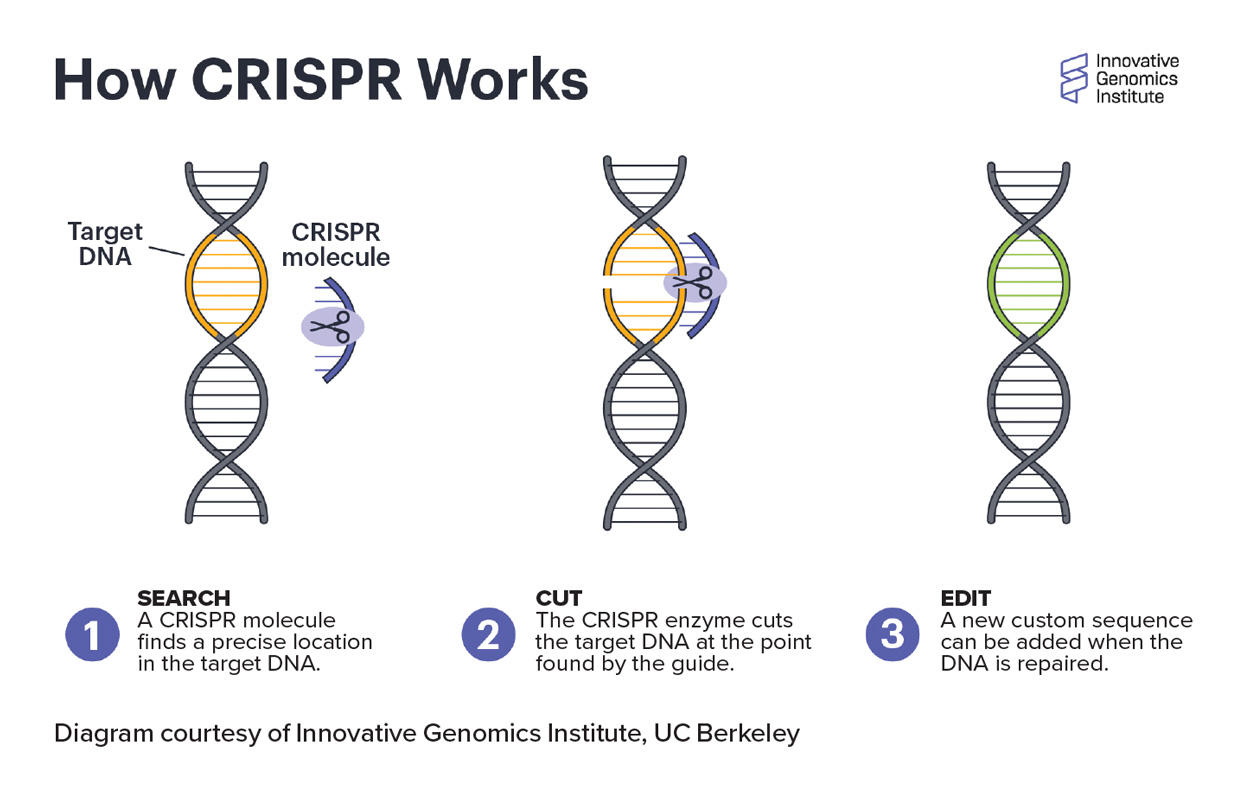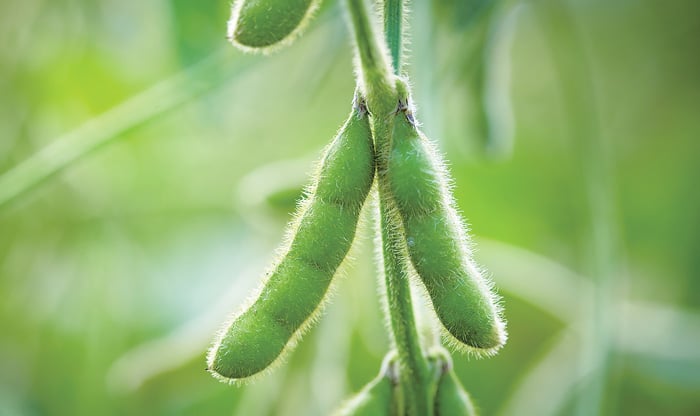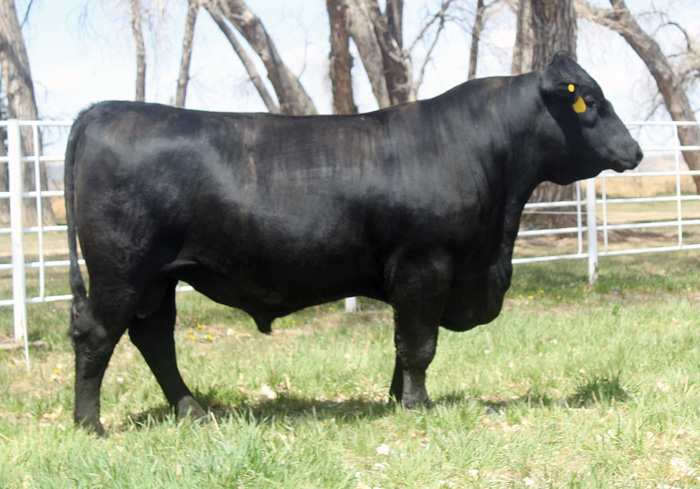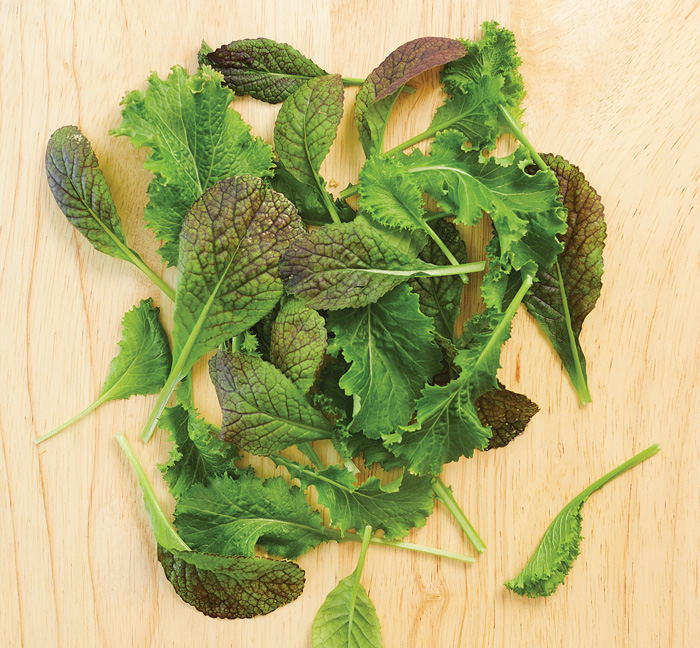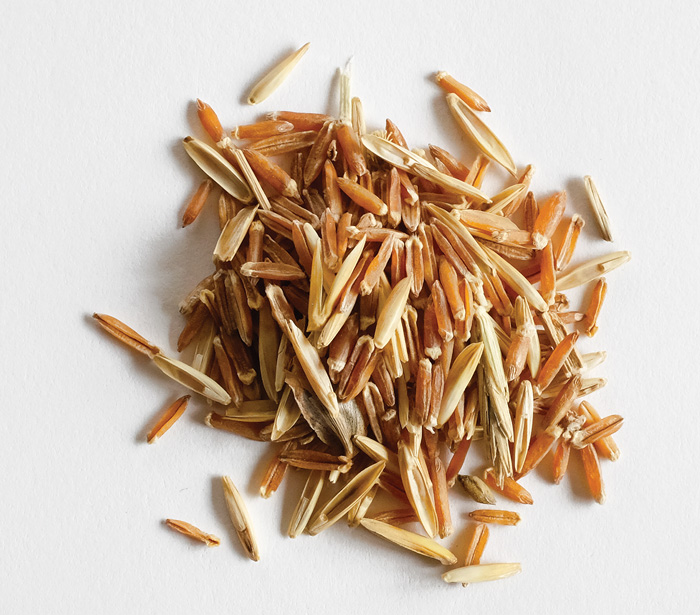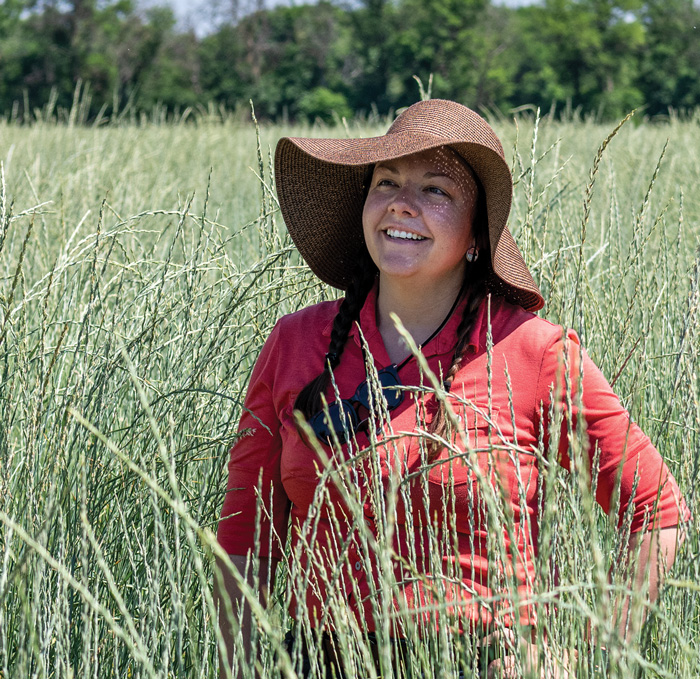
On the Road to Net Zero: Next-Generation Agriculture
Cutting-edge technologies like CRISPR present the tantalizing promise of more climate-friendly food production. What will it take to achieve carbon neutrality? How soon can we get there?
Article Content
Industries across the globe are looking for novel ways to reach net zero, deploying new and innovative technologies to strike a balance between the carbon released into the atmosphere by their operations and the amount of carbon neutralized or stored. For agriculture, reaching carbon neutrality may be an even greater imperative. Climate change is resulting in an increasing number of floods, droughts, and other powerful weather events around the world, impacting the industry’s ability to produce and supply food. With the addition of a quickly growing population, as well as continuing geopolitical issues that disrupt the food supply chain, the agricultural industry stands at a precipice. In order to maintain food availability and access, as well as food quality, the industry must develop a new agricultural toolbox to become sustainable in the face of a quickly warming planet.
Fortunately, there are remarkable developments taking place in laboratories across the globe that may provide the food system with ways to make progress toward climate neutrality. New technologies are allowing scientists to cultivate crops that are more drought and disease tolerant—and can even self-fertilize—to protect the food supply while reducing the need for heavy carbon-emitting processes or equipment. Livestock animals are being bred to be more resistant to disease and stress, while also reducing the amount of greenhouse gases they expel. The hope is that these next-generation crops and livestock will help move the world toward a net zero future.
Snip and Replace: A New Ag Toolbox
At the 2022 G20 Summit in Bali, the U.S. Department of Agriculture emphasized the importance of biotechnological innovations to help the industry address climate change, as well as ongoing food security issues across the globe. Some agricultural companies are using more detailed genetic information and artificial intelligence (AI) platforms to improve selective breeding, a practice that farmers and breeders have relied on for centuries to coax particular phenotypic traits out of our food-producing plants and animals.
Yet others are dedicating their efforts to leveraging clustered regularly interspaced short palindromic repeats—usually referred to as CRISPR—the Nobel Prize–winning gene-editing technique developed by Jennifer Doudna, a biochemist at the University of California, Berkeley, and founder of the Innovative Genomics Institute (IGI), to edit plant and animal genomes. CRISPR has garnered a good deal of attention for its potential medical applications, yet Doudna believes it may have even greater impact in agriculture.
Unlike controversial genetically modified organism (GMO) approaches, where scientists use foreign DNA to alter the genetic code of an organism to elicit the development of specific traits, CRISPR is, at its essence, a genetic find-and-replace tool. When researchers understand which gene or genes are responsible for a specific trait, they can use CRISPR to precisely snip out that part of the DNA and replace it with corrected or enhanced code. It presents the food industry with a new agricultural toolbox—one that is not creating new and unfamiliar food products, but rather is speeding up selective breeding efforts. Charlie Arnot, CEO of The Center for Food Integrity, says that’s what makes it so ideal for agricultural applications.
“GMO technology was not all that precise, incredibly costly, and took a decade or more to get approvals and bring to market—which is why GMOs also became the icon for what consumers don’t like about the industrialized food system,” he says. “CRISPR, on the other hand, is not only incredibly precise, it’s affordable and democratized. And it is providing the industry with remarkable developments that will give us crops that are more drought tolerant, self-fertilizing, and more nutritious. It’s incredibly impressive and will allow us to make agriculture more sustainable over the long term.”
Sprouting New Ideas
Food technology company Benson Hill is using a proprietary AI platform called CropOS to help optimize not only the productivity of soybean and yellow pea plants, but the amount of protein content within the legumes. The company already has next-gen-derived products on the market.
“Protein is in high demand, and it’s a limited resource. As the population grows, we can’t make a dent in how much protein is needed unless we increase it in a crop like soybean,” says Jason Bull, chief technology officer at Benson Hill. “CropOS figures out what genes we need to target, how many generations you need, what kind of testing is required, and how to reconfigure the pipeline to deliver it. We can increase the amount of protein in soybeans but, in using this platform, we also get the net benefit of being able to skip steps in our processing that are energy and water intensive so we can get a knock-on effect for the environment, too.”
Researchers at the IGI, however, are seeking ways to enhance different plant characteristics using CRISPR technology. At the IGI, scientists are looking at editing different genes that would allow them to enhance photosynthesis, increase the number of stomata, or the small pores that facilitate gas exchange on plant leaves, and promote denser, deeper root systems—all to better capture and store more carbon dioxide from the environment. Dave Savage, a biochemist at the IGI, for example, is working with colleagues to enhance photosynthesis in rice and sorghum plants. He and his colleagues have identified more than 20 genes of interest, including the one for ribulose-1,5-bisphosphate carboxylase/oxygenase, or Rubisco, the enzyme that brings carbon dioxide into the plant.
“Photosynthesis is the dominant metabolic process in any plant—it’s providing the energy from the sun to allow the plant to fix carbon and grow,” he says. “That is the entry point, in a way, of all carbon into the biosphere. Yet we know, for many plants, photosynthesis isn’t as optimal as it could be. If we could improve the reactions where photons are actually collected and the carbon reactions from that light to fix carbon and take it out of the atmosphere, we could not only help to reduce carbon in the environment but also help these plants grow.”
Others at the IGI are leveraging CRISPR to promote drought resistance in staple crops like rice—and to develop self-fertilizing seeds. They are also working on ways to promote disease resistance. Brad Ringeisen, executive director at the IGI, says they can currently edit over 30 different crops—all of which may have potential to help address climate change and improve the food supply. One of the biggest issues they face is determining which projects to work on.
“Our mission is to try to help low- and middle-income farmers by democratizing the use of CRISPR all over the world to make better crops,” he says. “And there is very little time to lose. It’s clear that, over the last 10 years, there’s been an increase in climate disasters that will affect crop yields around the globe. We are experiencing droughts, floods, emerging pathogens, pests, and disease. CRISPR allows us to make improvements in faster iterations. It allows us to screen different alterations and get them from the lab to the field much faster. And because of what it can do, we’re going to see an explosion of CRISPR products come to the market within the next five years.”
Making Livestock More Sustainable
Approximately 15% of the world’s greenhouse gases come from the very animals we consume. That’s why scientists are also looking at ways CRISPR or other gene-editing techniques can alter cattle, swine, and other livestock to make livestock farming more sustainable. Tad Sonstegard, president and CEO of Acceligen, says his company has already bred more heat-resistant cattle by making edits to the SLICK gene, a prolactin receptor gene that gives the animals an increased capacity for sweating that helps them better regulate their internal temperature.
“We found six different mutations within this one gene across all these different cattle breeds that gives the animal increased heat resilience,” he explains. “Over the past 500 years, cattle, who are not native to areas like the Caribbean, adapted to the heat in those areas through natural mutations. With CRISPR, we don’t have to wait that long to make the animals more heat resistant. We can make this simple edit to the gene and know that we can make a change that helps these animals avoid heat stress.”
Acceligen is also using CRISPR to make cattle more resistant to nagana, the cow-equivalent of the tsetse fly–induced sleeping sickness so they can better survive in sub-Saharan Africa. The company also has a project to increase resistance to porcine reproductive and respiratory syndrome, a viral disease with an estimated mortality rate of 20% in swine populations.
“We are focused on making the kind of changes that could be done by crossbreeding, but it would just take much, much longer to do,” he says. “When our animals are healthier, and we aren’t losing a lot of animals to these different diseases, we help the environment. We’re improving our herds through gene editing, bringing in alleles to make the animals healthier and more productive so they aren’t just sitting around producing more greenhouse gases. We can reduce the number of animals we need for food production and protect the ones we have to fight back against climate change.”
IGI is taking a different tack to reduce greenhouse gas emissions from livestock. The institute recently announced a new research initiative, Engineering the Microbiome with CRISPR to Improve our Climate and Health, to reduce the expression of methane-producing genes in an animal’s microbiome and, consequently, reduce methane emissions.
“If you are talking about trying to make an impact on climate, finding ways to reduce that 15% of greenhouse gases is a good place to start,” says Ringeisen. “Our partners have already identified a seaweed additive that can reduce methane emissions. But that has to be given to the cow every single day. Jennifer Doudna and Jill Banfield, our director of microbiology, have demonstrated you can take a complex consortia of microbes, take the CRISPR molecules, and make genetic changes to specific microbes. Our plan is to try to do that in vivo, to deliver those molecules to the gut in a single dose, and target methane so it is consumed before it’s emitted.”
Addressing the Challenges
While researchers are making gains in all these areas, to date, there is only one CRISPR-enhanced product on the market: Conscious Greens by Pairwise, a greens mix with an enhanced nutritional profile. While it’s expected that more products will soon follow, there are many challenges that must be addressed to move these genetically edited plants and animals from the laboratory into the field. It starts with the technical challenges involved with precision gene editing.
“CRISPR has almost trivialized our ability to efficiently cut DNA, but predicting and controlling repair outcomes is still quite challenging,” says Rodolphe Barrangou, a CRISPR researcher at North Carolina State University. “It’s also worth noting that we lack a deep understanding of plant genetics. We don’t really know a lot about drought genes, pest tolerance genes, yield genes, architecture genes, water usage genes, and nutrient utilization genes in plants outside of soy and corn. And to make the most of CRISPR, we need a deeper understanding of those plant genetics.”
There are also practical considerations that must be addressed. To start, time. Most plants require a season to fully grow. Trees can take years to reach adulthood. And, far too often, researchers will not understand whether a particular edit has been successful until significant time has passed. The time required to do controlled field trials also makes it more challenging to understand potential off-target effects for the ecosystem, says Melinda Kliegman, director of public impact at the IGI.
“You do the best you can with field trials and thinking through what the consequences of a particular change may be to the ecosystem,” she says. “While we are working in agricultural systems, which are not natural ecosystems, we still need to think through how the use of these plants might change the microbiome, pollinators, and the soil. And you have to come up with ways to test for the different variables you may be concerned about to avoid unwanted off-target effects.”
Moving Forward
Next-generation crops have the power to transform the food system, providing a way to deal with climate change as well as to better support nonindustrialized agriculture. And the science is moving quickly—much more so than the regulatory and policymaking entities that govern our food production systems. Which is why, Barrangou argues, the biggest obstacles to overcome are not technical, but cultural—and necessary to get farmers, breeders, and consumers on board with genetically edited food products.
“We have a lot of work to do in terms of regulations, consumer acceptance, safety, and storytelling,” he says. “I would argue that we need to spend a lot more time as scientists addressing those concerns because, as the pandemic reminded us, you could have the best technology in the world, but if people don’t accept it, it’s not going to go anywhere.”
Arnot agrees. The Center for Food Integrity created a Coalition for Responsible Gene Editing in Agriculture, a framework designed to ensure that scientists are working in concert with other agricultural stakeholders to bring gene-edited products to market in an ethical and sustainable manner.
“When you think about the real challenges we’re seeing with climate change and the highly localized extreme weather events that are incredibly damaging to agriculture, it’s important that we create crops that are more resilient,” he says. “But we have to do it responsibly—which is why we spent three years working with a diverse group of stakeholders to develop the framework to consider the societal and environmental implications of gene editing in agriculture.”
He added that the benefits go beyond simple agriculture and can also enhance processed foods downstream. The democratization of new gene-editing applications means that smaller companies and farms can leverage them not only to create more resilient crops but also foods with greater nutrient density. They can also help enhance the supply chain by creating products with longer shelf lives and improved ingredient performance, which could lead to lower costs for the food industry, as well as for consumers.
“Collectively, the 500-plus applications in development can make the supply chain more reliable and efficient—and better able to meet consumers’ evolving needs,” says Arnot.
Net zero beckons. And it’s clear that new technologies and tools can help us provide the world with more sustainable agricultural products and practices, Barrangou says—provided we apply them responsibly.
“If we are going to be more sustainable and save the planet, we’re going to have to be more responsible with our resources and alleviate our carbon footprint,” he says. “We’re going to need fewer inputs and more outputs. We’re going to need to bring more biodiversity to feed the world with more efficiency, making better use of the resources that we have. And tools like CRISPR can help us do that—provided we can better explain the cost/benefit ratios of developing these next-generation crops.”
How Perennial Grains Can Help
Researchers at The Land Institute, a nonprofit organization, are hoping to harness the power of perennials to make agriculture more sustainable. Tessa Peters, director of crop stewardship, says that perennial grains, in particular, are a good investment.
The Land Institute has developed an intermediate wheatgrass called kernza, the first commercially viable perennial grain crop in the United States, which could replace more demanding annual crops like traditional cereal grains.
“Grains make up 70% to 75% of the calories that humans consume,” says Peters. “Perennial grains can make agriculture more sustainable because they have long, deep roots to help hold the soil in place and help prevent erosion. They also help to keep carbon in the soil, which is more climate friendly.”
Peters and colleagues used selective breeding techniques to select for larger seed size, higher yield, and increased threshability in wheatgrass. It is available now as a commercial flour product, as well as in pancake mixes.
“A lot of farmers already have a perennial somewhere in their rotation,” explains Peters. “We are working to make sure that perennials can contribute to human nutrition, while also improving the overall soil health and profitability of the farm.”
TO LEARN MORE
A CRISPR Food Milestone: To learn more about the launch of Conscious Greens, the first food product developed using CRISPR gene-editing technology, please visit iftexclusives.org/CRISPR-food-milestone.
Stay Tuned for More About the Road to Net Zero
This is the second in a series of four articles focused on the complexities of advancing food production toward the goal of reducing greenhouse gas emissions to net zero by 2050. Next up:
September 2023: The Future of Cellular Ag
December 2023: Leveraging Artificial Intelligence
Key Takeaways
- Emerging technology tools like CRISPR are creating opportunities to cultivate crops that are resistant to drought and disease.
- Gene-editing techniques can make livestock production more sustainable and prevent disease in animals.
- Despite the remarkable potential of gene editing to deliver new and improved plant varieties and livestock with less environmental impact, technical challenges remain.

